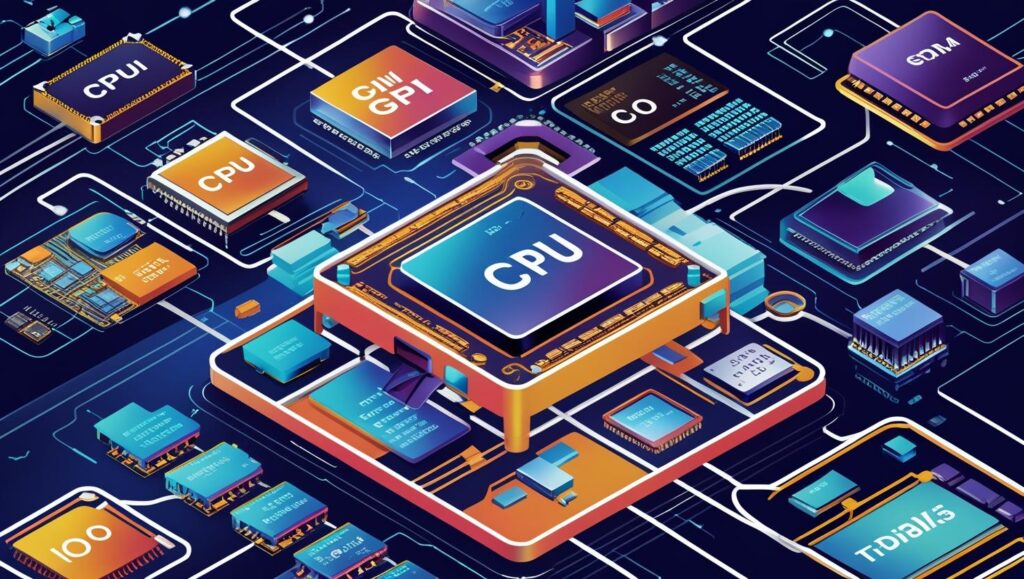The System-on-Chip (SoC) market is undergoing rapid transformation, driven by the escalating demand for compact, high-performance, and energy-efficient solutions across industries. SoCs have become the core enablers of modern electronics, integrating computing, memory, graphics, connectivity, and specialized accelerators onto a single chip. As consumer electronics, automotive systems, industrial automation, and AI-driven devices continue to evolve, several key trends are defining the future direction of the SoC market.
Download PDF Brochure @ https://www.marketsandmarkets.com/pdfdownloadNew.asp?id=99622125

Edge Computing and AI Integration
One of the most defining trends in the SoC market is the integration of artificial intelligence capabilities directly into edge devices. With the rise of smart home devices, autonomous vehicles, surveillance systems, and industrial IoT, there is a pressing need for processing to occur at the edge rather than relying solely on cloud infrastructure. SoCs are being designed with embedded AI accelerators—such as neural processing units (NPUs), digital signal processors (DSPs), and specialized GPUs—that enable real-time inference and analytics directly on the device. This reduces latency, enhances data privacy, and improves the overall efficiency of edge computing applications.
Heterogeneous and Modular Architecture
Modern SoC design increasingly favors heterogeneous computing architectures that combine multiple types of processors and accelerators on a single chip. This includes general-purpose CPUs, graphics processors, AI engines, and even custom cores designed for specific tasks like signal processing or security. Modular and chiplet-based designs are gaining traction, allowing manufacturers to combine various components into a single package with improved flexibility, scalability, and cost-effectiveness. This approach is particularly useful in high-performance computing (HPC), mobile AI, and automotive applications.
Advanced Semiconductor Manufacturing Technologies
The shift to smaller semiconductor nodes is playing a crucial role in the advancement of SoCs. Leading chipmakers are transitioning from 7nm to 5nm and even 3nm process technologies, allowing for more transistors to be packed into a smaller area. This enhances performance, reduces power consumption, and supports more complex integrations on a single chip. In addition, techniques like 3D chip stacking, FinFETs, and gate-all-around (GAA) transistors are being adopted to push the boundaries of what’s possible with SoC design.
Rise of AI Training at the Edge
While traditional SoCs have focused on inference, there is growing interest in supporting on-device AI training. As AI models become more dynamic and personalized, enabling local training on edge devices can reduce dependency on cloud updates and allow systems to adapt in real time. This trend is particularly relevant in robotics, automotive systems, and personal electronics where continuous learning and low-latency adaptation are essential.
Enhanced Power Efficiency and Thermal Management
With SoCs powering a broad spectrum of devices, from battery-constrained smartphones to power-hungry AI servers, power efficiency is a critical design parameter. SoC designers are implementing advanced power management techniques such as dynamic voltage and frequency scaling (DVFS), power gating, and workload-aware scheduling. These features help balance performance and energy consumption, making SoCs suitable for both high-end and low-power applications. Effective thermal management is also essential, especially for devices operating in confined environments like wearables, AR/VR headsets, and automotive ECUs.
Security and Trust in Hardware Design
As SoCs are deployed in mission-critical and data-sensitive applications, security has become a core element of design. Hardware-based security features, including secure boot, trusted execution environments (TEEs), encryption engines, and hardware root of trust, are increasingly embedded within SoCs. These measures are crucial in protecting data, ensuring device integrity, and preventing unauthorized access, especially in financial services, healthcare, and connected industrial systems.
Support for 5G, Wi-Fi 6/7, and Next-Gen Connectivity
Next-generation connectivity standards are also shaping the SoC landscape. The proliferation of 5G networks, Wi-Fi 6/7, and ultra-wideband (UWB) technologies is prompting SoC manufacturers to integrate advanced RF and modem technologies directly onto the chip. These capabilities enable high-speed, low-latency communication, crucial for smart devices, automotive V2X systems, and augmented reality applications.
Open-Source and Customizable Architectures
The emergence of open-source instruction set architectures (ISAs) like RISC-V is reshaping how SoCs are developed. RISC-V allows for more customizable, cost-effective designs tailored to specific use cases. This flexibility is particularly attractive to startups, academic institutions, and industries looking to develop application-specific SoCs without being tied to proprietary platforms. As adoption grows, we can expect a surge in innovation and accessibility in SoC development.
Frequently Asked Questions (FAQs) on the System-on-Chip (SoC) Market
1. What is a System-on-Chip (SoC)?
A System-on-Chip (SoC) is an integrated circuit that consolidates all major components of a computer or electronic system—including CPU, GPU, memory, input/output ports, and often AI accelerators—onto a single chip to improve efficiency, reduce power consumption, and minimize space.
2. What are the key applications of SoCs?
SoCs are widely used in smartphones, tablets, wearables, smart home devices, autonomous vehicles, industrial automation, AI-enabled edge devices, medical electronics, and IoT systems.
3. How does an SoC differ from a traditional CPU or microcontroller?
While a CPU handles processing, an SoC integrates the CPU along with other critical components like GPU, memory, and I/O interfaces into one chip, enabling compact, power-efficient designs ideal for embedded and mobile devices.
4. What role does AI play in modern SoCs?
AI is a driving force in SoC innovation. Modern SoCs often include dedicated AI accelerators (NPUs, DSPs, TPUs) to efficiently run machine learning models for applications such as image recognition, voice processing, and autonomous decision-making at the edge.
5. Who are the leading players in the SoC market?
Top SoC manufacturers include Qualcomm, Apple, Intel, NVIDIA, AMD, Samsung Electronics, MediaTek, Broadcom, and Huawei (HiSilicon). Emerging players are also building SoCs based on RISC-V and open-source architectures.
See The Latest Semiconductor Reports:
Edge AI Hardware Market by Device, Processor (CPU, GPU, and ASIC), Function, Power Consumption (Less than 1 W, 1-3 W, >3-5 W, >5-10 W, and More than 10 W), Vertical and Region – Global Forecast to 2030
Embodied AI Market by Product Type [Robots (Humanoid Robots, Mobile Robots, Industrial Robots, Service Robots, Cobots), Exoskeletons, Autonomous Systems, Smart Appliances], Level of Embodiment (Level 1, Level 2, Level 3) – Global Forecast to 2030